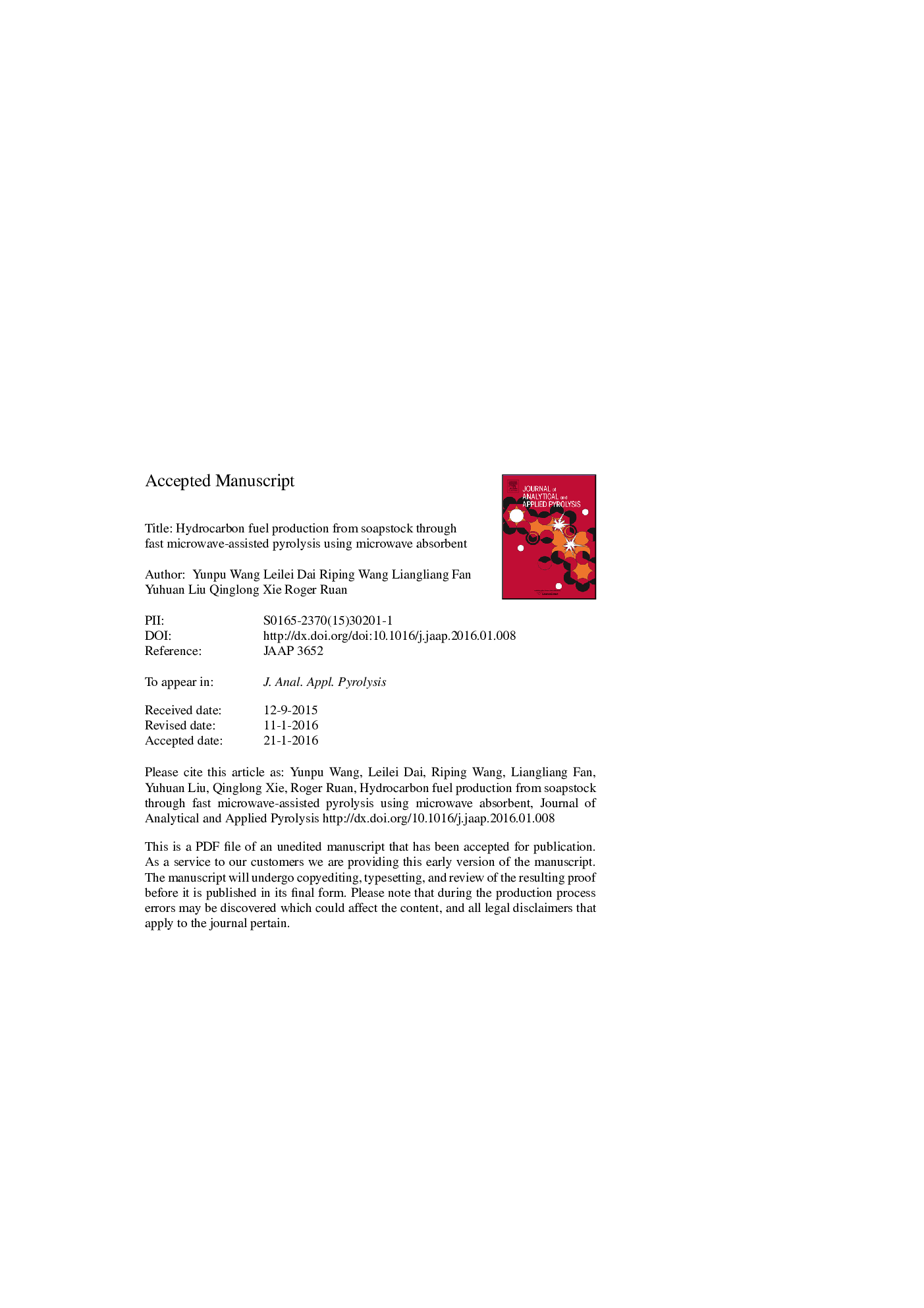| Article ID | Journal | Published Year | Pages | File Type |
|---|---|---|---|---|
| 7606594 | Journal of Analytical and Applied Pyrolysis | 2016 | 27 Pages |
Abstract
Microwave-assisted pyrolysis (MAP) of soapstock with and without microwave absorbent was conducted to produce hydrocarbon fuel. The use of microwave absorbent significantly increased the hydrocarbon yield and the contents of alkanes and aromatics in the hydrocarbons. The effects of pyrolysis temperature and feeding rate on hydrocarbon yield and composition were investigated, with SiC particles as the microwave absorbent bed. The optimal conditions for the microwave-assisted pyrolysis of soapstock include use of the microwave absorbent bed, a temperature of 550 °C, and a feeding rate of 6 g/min. Under the conditions, the yield of hydrocarbon fuel reached 64.74 wt.%, with high proportions of alkanes and low proportions of alkenes. The calorific value of hydrocarbon fuel from microwave-assisted pyrolysis of soapstock is higher than that of biodiesel, but lower than that of 0# diesel. The density and dynamic viscosity of the pyrolysis fuel are similar to those of 0# diesel. In addition, the hydrocarbon fuel has low temperature fluidity, freezing point and cold filter plugging point. This study reveals that fast microwave-assisted pyrolysis of soapstock is a promising technology for commercial production of hydrocarbon fuel. Further studies are needed on the catalyst addition to improve the properties of hydrocarbon fuel.
Related Topics
Physical Sciences and Engineering
Chemistry
Analytical Chemistry
Authors
Yunpu Wang, Leilei Dai, Riping Wang, Liangliang Fan, Yuhuan Liu, Qinglong Xie, Roger Ruan,
